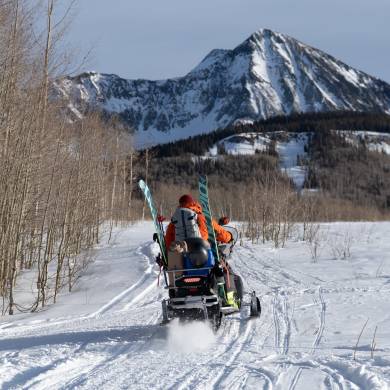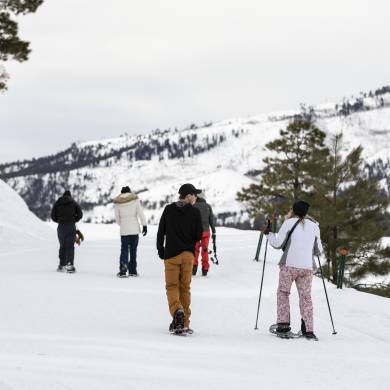There’s nothing like the crackle and pop of a glowing campfire. Not to mention the warmth and dancing lights a good fire provides under the stars. It’s one of the more enjoyable aspects of camping.
The wilderness is a magical place where myth and legend reign supreme. Fire safety while camping, especially here in Durango, Colorado, is sometimes misguided. It seems everyone has their theories, and even the most experienced of campers don’t always get it right.
Building a campfire is fun, but it comes with serious responsibility. We will offer up (and debunk) several myths surrounding campfire safety.
Myth: Not Seeing Flames Means the Fire is Out
Just because you don’t see an active flame doesn’t mean your fire is even close to being out. Hidden embers are tricky. Pay attention to the wind. A strong breeze can kick that fire back up and spread it quickly. Make sure there is nothing within at least 10 feet of the fire that is flammable. This 10-foot rule also goes for your tent, any clothing you have hung out to dry, and other flammable materials.
Myth: You Can Bring Your Own Wood
If you’re camping a few hours away from home and decide to bring your own wood, you could, but then you may also be bringing insects and diseases in that wood, thus introducing them into the forests around your campsite where they weren’t there before. That’s why it’s so important to use local firewood. “Local” is defined as the closest source of firewood to your site you can find. Most campgrounds provide their guests with local wood, or at the nearest general store.
Myth: You Can Burn Your Trash
Throwing your trash into an open flame is the perfect way to easily get rid of it. I mean, it just turns into ash, right? Wrong. Burning items like foil, plastic, and Styrofoam release acidic gases, and toxic chemicals into the atmosphere. The ashes from garbage contaminate the surrounding soil and groundwater. Trash that is partly burned may be scattered by wind and wildlife, causing litter problems. Additionally, burning trash and debris causes 40% of all forest fires. Always use the provided waste and recycling receptacles at your campsite, and if there are none, always pack out your trash and take it with you.
Myth: A Fire Pit Prevents a Fire from Spreading
Most campsites provide a fire pit or fire ring specifically for campfire use. If one is provided at your site, this is the only place you should be building a fire. Having said that, it does not mean that a neat little circle will contain your fire.
Myth: All Wood Burns the Same
There are so many different kinds of wood. And while all wood burns, there are certain types that are good for campfire burning and just make better sense to use. Ash is considered one of the best burning woods with a nice, steady flame and decent heat output. It’s also easy to saw and split. Beech is another good camp burning wood, although it may shoot embers a lot, and it’s easy to chop. Birch gives good heat output, but burns quickly, so have a good amount on hand. The smell of birch is pleasant. Blackthorn burns slowly and gives out good heat with little smoke. Likewise, cherry wood has good heat output and has a nice scent, but is slow to start.
Myth: It’s OK to Leave Your Fire Unattended
A campfire should never be left alone, no matter how contained you think it is. Even the smallest of breezes can spread a fire amazingly fast, so there should be at least one set of eyes on the flames at all times. Want to take a short hike to the restroom? Extinguish the fire before you do. Yes, we’re serious! You can always rekindle the fire upon your return. To quickly and properly extinguish a campfire, dump water on the fire, stir the ashes with a shovel or other sturdy metal tool, then dump more water onto it. The campfire should be completely cold before you leave it. It is too hot to touch? Then it is also too hot to leave. Move any stones or large logs around to make sure there are no burning embers underneath.
Myth: Most Forest Fires Start from Lightning Strikes
While it’s true that some forest fires are started by lightning strikes, or even by the heat of a mid-day sun. But these are few and far between. Year after year, statistics show that people are overwhelmingly the cause of forest fires. Human carelessness is the #1 cause of forest fires. Other examples are discarded cigarettes, not burning debris properly, playing with matches, or fireworks. And yes, campfires.
Myth: The Bigger the Fire, the Better
When it comes to campfires, less is more. Even for large groups. You don’t need a bonfire to stay warm, or to keep a fire going for a long time. See the types of wood above that are good for campfires. Smaller campfires are also better for cooking and they create perfect coals for roasting marshmallows. Besides, half the fun is just sitting around a smaller fire and tending to it every so often, whether you’re alone or with people having a great conversation.
Conclusion
Camping fire safety doesn’t have to be a mystery. With a little know-how and the above tips, you will have a fantastic and low-stress camping trip. And, you will have peace of mind knowing that you can handle almost any campfire situation. Be sure to impart this knowledge to any other campers you encounter.




